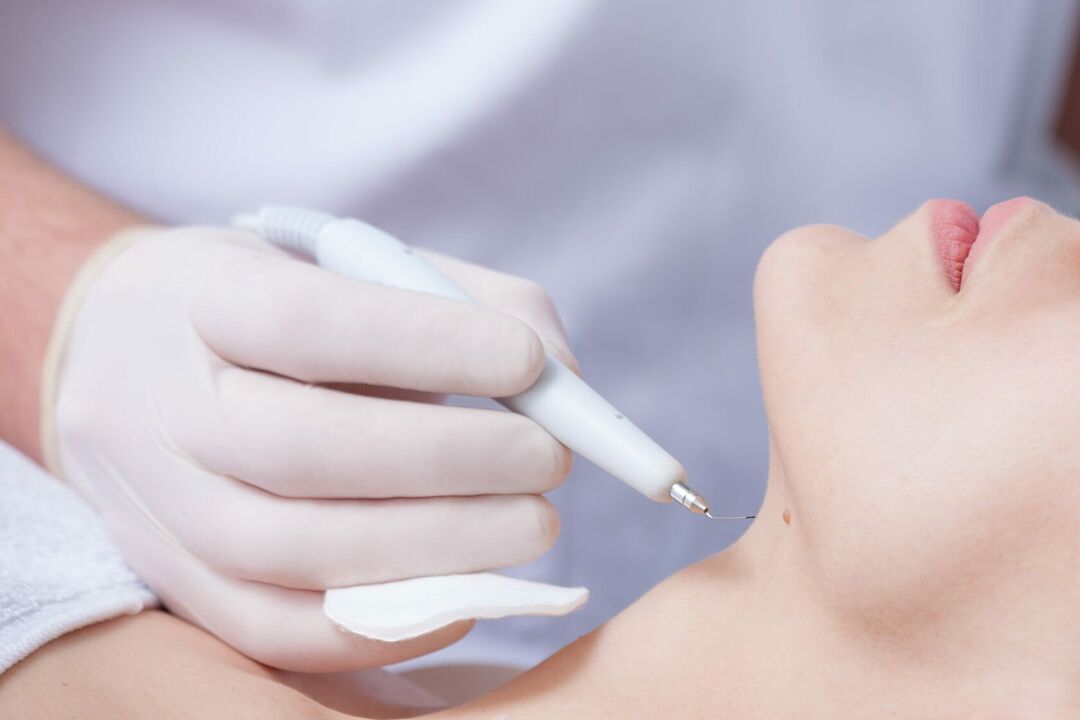
Laser removal is used in 90% of dermatology cases. The time-tested technique involves the short-term impact of a laser beam on tumors. When the laser hits the skin, it causes the molecules to move and release fluid, causing the skin to burn and the tumor to disappear. Despite such an unflattering description, the procedure takes very little time and is indeed considered one of the safest, non-invasive and effective surgeries available. Another advantage is the price, which is affordable for most patients.
How does healing occur?
- stage. After laser removal, a black crust appears almost immediately where the beam struck. It must not be removed, scratched or soaked in water. The appearance of scabs is an absolutely normal reaction of the body to laser exposure. It protects wounds from the penetration of pathogenic bacteria and dirt and promotes rapid growth of new tissue to replace old damaged tissue. Some swelling and redness are also normal. Try to ensure that the laser treatment area is kept quiet for the first 5-7 days. Do not under any circumstances rub or wet the area, or lubricate the area with wound healing creams and ointments. Do not wear clothes that are too tight and do not cover the wound with a bandage or bandage. It's best to avoid using chlorhexidine, hydrogen peroxide and other disinfecting solutions such as iodine or brilliant green.
- stage. Scabs disappear approximately 7-10 days after laser removal. In its place was a new patch of soft pink skin. There's still no need to apply anything, but be sure to protect it from UV rays. Therefore, reduce your exposure to the sun and use the highest level of sun protection – at least 50 SPF – when you go out. The aggressive effects of UV radiation on young, pink skin can have undesirable consequences - for example, persistent pigmentation that will be extremely difficult to remove.
- stage. After approximately sixteen to twenty days, youthful skin will form over the area of the wart or mole. Now she is no longer afraid of ultraviolet rays. You can wet your skin and wipe it with a towel. No more special activities or procedures are required. Sometimes, even after 20 days, mild itching remains, but superficially the skin looks absolutely normal and healthy. In this case, special soothing ointments can be used. After about 30 days, the hole left by the laser at the site of wart or mole removal will flatten and become completely invisible. That's the beauty of this procedure: after three months, you won't even remember those cosmetic flaws you may have suffered.
How to treat the area after laser removal? doctor's advice
- potassium permanganate. Commonly known as potassium permanganate. In its undiluted form, it can be dangerous as it can cause chemical burns. To reduce redness in the wound and reduce the potential for inflammation, use a pale pink solution of potassium permanganate. Lotion can be used several times a day, but dressings are best avoided.
- Antibiotic ointment. If the area after laser removal is very red, swollen, or painful, use antibiotic ointment. It effectively reduces the possibility of bacterial inflammation.
- Phenol solution. If there is fluid oozing from the wound, it is best to dry the area after laser removal. This solution is best suited for this purpose.
- Anti-corrosion solutions. These effective antiseptics are used after laser removal of papillomas, warts and moles from the mucous membranes.
Medical advice that patients should follow
- Do not touch the area affected by the laser beam unless necessary.
- Wear loose-fitting clothing or shoes and make sure there is no injury or pressure on the wound.
- In the air, all regeneration processes occur faster, so there is no need to use bandages and hide the damaged area under clothes.
- It is worth limiting alcoholic beverages for three to five days after laser removal of a mole or papilloma. In fact, alcohol causes vasodilation, which means the skin's recovery and regeneration time may be delayed. In addition, the risk of wound bleeding may increase under the influence of alcoholic beverages.
- Do not self-medicate if any side effects occur. Contact your healthcare provider immediately.
- Avoid going to the sunroom until the scabs fall off and the wound is completely healed. Doctors recommend going to a solarium about three months after surgery. The same rules apply when going to a pool, spa or massage parlor.
- If you have had a mole removed from your face with laser, stop using decorative cosmetics for 5-7 days.
- If a long time has passed since the mole was removed and there is pus, blood, or fluid oozing from the wound, you should be alert. Causes of concern may be increased body temperature, chills, increased swelling, and redness at the extraction site. All of these conditions require immediate medical attention. Do not attempt to self-diagnose and do not delay going to a clinic for laser papilloma removal.














































































